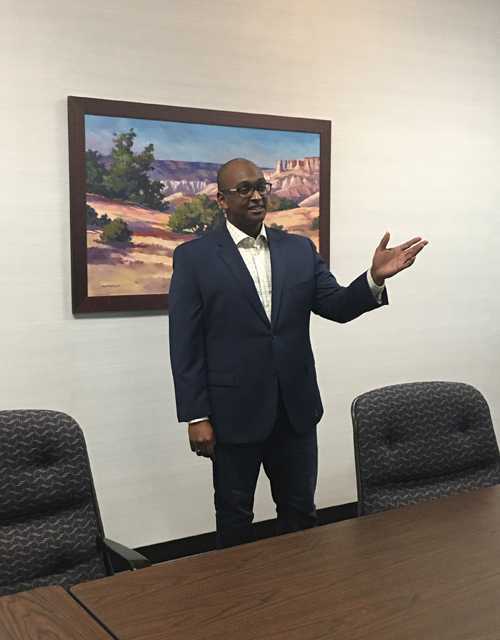Features from the Front Line: Tennessee
Spotlight on Tennessee Department of Health

Tori Ponson, from the Tennessee Department of Health, provides updates to healthcare providers regarding new state legislature on Zika.
Building a Dedicated Birth Defects Team
Tennessee identified its first case of travel-associated Zika virus (Zika) infection in August 2016. Unlike other states, Tennessee had no dedicated birth defects team to tackle the Zika surveillance challenge when the Zika outbreak emerged in the Americas in 2016. “Tennessee has not had a dedicated birth defects team for approximately five years, so we created a ‘fast-passive’ system,” says Tori Ponson, MPH, CPH, who joined the Tennessee Department of Health (TDH) as the new Zika Pregnancy Registry Coordinator, Zika-related Birth Defects Surveillance System manager, and Birth Defects Epidemiologist in January 2017.
Emphasizing Outreach
The TDH birth defects team made it a priority to reach out to local health departments, providers, and birthing facilities statewide. Tennessee health departments are organized into county health departments and rural regional offices that report directly to the state, as well as six metropolitan health offices that report to their local governments and partner with the state through contractual relationship.
“We rely on local and regional health departments to send patient information up to us,” explains Ponson, noting that strong communication channels between the local and regional offices and TDH are key in addressing public health challenges like Zika. “Our biggest push is education to build understanding that Zika is here to stay and we need better working relationships, systems, and sustainable processes to help women and children at risk for Zika.”
When reaching out to healthcare providers, Ponson sought out facilities with the highest number of deliveries per year. The need for better communication between TDH and providers became clear after the state legislature updated its microcephaly surveillance in January 2017 to include the reportable Zika-related neurologic birth defects. Many healthcare providers remained unaware of the new legislation, resulting in a statewide formal notification to medical and nursing directors about the change.
Establishing a Unified Data Collection Process in Hospitals
Recently, Ponson worked with a large medical center in Middle Tennessee to develop a unified process to send Zika-related birth defects data to TDH in a more timely, consistent manner. The medical center has led Tennessee in identifying birth defects and creating a model to share electronic records directly with TDH.
Recognizing the power of communication, Ponson recently established monthly calls with his counterparts in Louisiana, Mississippi, Oklahoma, Michigan, and Arkansas to share common challenges and solutions and “find models that work and are sustainable long-term with minimal funding impacts.”
The collaborative efforts in Tennessee will eventually allow for patient data to be released more quickly, with the time to report data decreasing from 18 months to approximately 6 months, with plans to shorten that lag period even more once hospitals are able to provide TDH with remote electronic medical record access.
Ponson says he is most proud of the communication with local hospitals that are now working with the state toward a common goal. “We’ve also done well building relationships within our own health department, improving existing communication and establishing some that weren’t there before. And, working with other states, we now share when a pregnant woman with confirmed Zika, someone with potential Zika exposure, or an infant with a qualifying birth defect transfers from one state to another, and that helps with the timeliness of our work and ensures that the affected individuals and their families are referred to the appropriate services and/or resources.”
- Page last reviewed: August 18, 2017
- Page last updated: August 18, 2017
- Content source:


 ShareCompartir
ShareCompartir